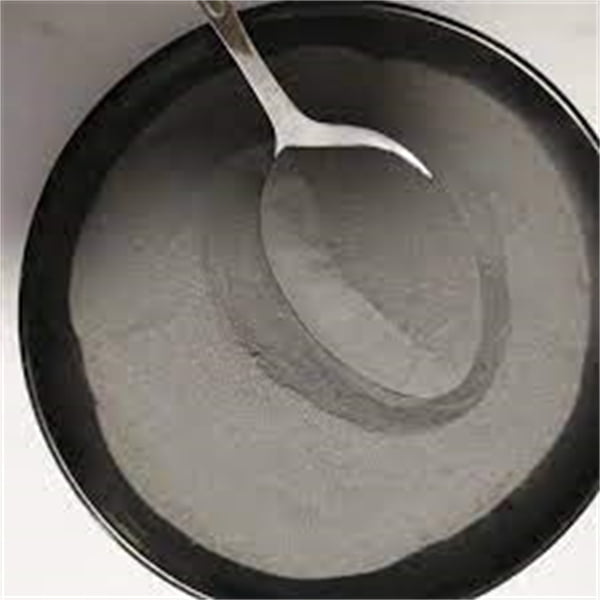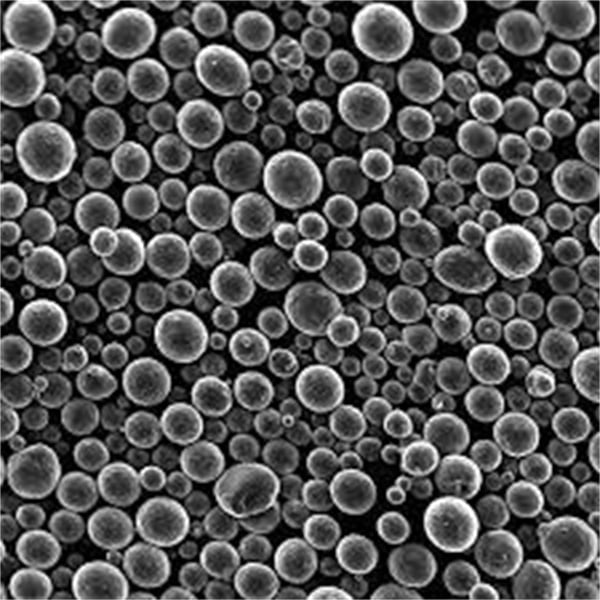3D-utskrift av metallpulver: välja utrustning för plasmaatomisering
Innehållsförteckning
Tänk dig att skapa invecklade föremål direkt från en ström av smälta metallpartiklar, var och en inte större än ett sandkorn. Det här är inte science fiction, det är verkligheten med 3D-utskrift med metallpulver. Men var kommer dessa små metalliska underverk ifrån? Följ med in i den fascinerande världen av plasmaatomisering, en teknik som omvandlar smält metall till byggstenarna i 3D-printade mästerverk.
En djupdykning i plasmaatomisering
Plasmaatomisering är i grund och botten en högteknologisk metallraffineringsprocess. Så här fungerar den:
- Förberedelse av råmaterial: Resan börjar med valet av metallråvara med hög renhet, vanligtvis i form av göt eller stavar. Dessa väljs omsorgsfullt för att säkerställa att det slutliga pulvret uppfyller specifika krav på materialegenskaper och sammansättning.
- Smältning och plasmagenerering: Den valda råvaran matas sedan in i en högtemperaturugn där den smälts till en ström av smält metall. Samtidigt joniseras en inert gas, t.ex. argon, med hjälp av en elektrisk båge, vilket skapar en plasmaström med hög temperatur och hög hastighet.
- Atomisering: Kärnan i processen ligger i interaktionen mellan den smälta metallen och plasmaströmmen. Plasman, som fungerar som en högeffektiv skärbrännare, stör den smälta metallströmmen och bryter ner den i små droppar. Dessa droppar stelnar snabbt under flygningen på grund av den extrema kylning som den omgivande gasmiljön ger.
- Insamling och klassificering av pulver: Det resulterande metallpulver, med en fördelning av partikelstorlekar och former, samlas sedan upp med hjälp av cykloner eller filter. Slutligen genomgår pulvret en klassificeringsprocess, där partiklar separeras baserat på deras storlek och morfologi med hjälp av siktning eller luftklassificeringstekniker.

Utrustning för plasmaatomisering
Plasmaatomiseringens magi uppstår inte av sig själv. Det krävs en komplex orkester av specialutrustning som var och en spelar en avgörande roll i processen. Låt oss fördjupa oss i nyckelspelarna:
1. Plasmabrännare: Denna specialiserade anordning fungerar som ledare och genererar den högtempererade plasmaströmmen med hjälp av en elektrisk båge och en inert gas. Det finns olika brännarkonstruktioner som var och en erbjuder olika fördelar när det gäller plasmatemperatur, hastighet och kontrollerbarhet.
2. Induktionsugn: Föreställ dig en högteknologisk kruksmältare. Induktionsugnen använder elektromagnetisk induktion för att effektivt värma och smälta metallråvaran till önskad temperatur, vilket säkerställer konsekvent och enhetlig smältning under hela processen.
3. Atomiseringskammare: Det här är scenen där dramat utspelar sig. Kammaren rymmer plasmabrännaren och den smälta metallråvaran, vilket ger en kontrollerad miljö för atomiseringsprocessen.
4. System för uppsamling av pulver: Efter finfördelningen måste metallpartiklarna fångas upp. Det är här som uppsamlingssystemet, med cykloner eller filter, kommer in i bilden och effektivt separerar pulvret från gasströmmen.
5. Klassificeringssystem: Alla metallpulverpartiklar är inte skapade på samma sätt. Klassificeringssystemet, som ofta använder sig av siktning eller luftklassificering, sorterar pulvret noggrant baserat på partikelstorlek och morfologi, vilket säkerställer en konsekvent och önskvärd pulverfördelning för 3D-utskriftstillämpningar.
6. Kontrollsystem: Hela processen övervakas och styrs noggrant av ett sofistikerat kontrollsystem. Detta system säkerställer optimala driftsparametrar för plasmabrännaren, ugnen och annan utrustning, vilket garanterar en jämn och högkvalitativ pulverproduktion.
Utforska populära Metallpulver
Plasmaatomiseringens skönhet ligger i dess mångsidighet. Den kan omvandla ett brett spektrum av metaller till pulver som är färdiga för 3D-utskrift. Här är några av de mest populära metallpulvren som används vid additiv tillverkning:
1. Pulver av rostfritt stål: Dessa mångsidiga pulver erbjuder en kombination av styrka, korrosionsbeständighet och prisvärdhet, vilket gör dem idealiska för olika tillämpningar, från medicinska implantat till komponenter för flygindustrin.
2. Titanpulver: Titanpulver är kända för sitt exceptionella förhållande mellan styrka och vikt och sin biokompatibilitet och används i stor utsträckning inom flyg-, medicin- och dentalindustrin.
3. Aluminiumpulver: Aluminiumpulver är lätta och lätt återvinningsbara och är populära val för applikationer som kräver viktminskning och god värmeledningsförmåga, t.ex. inom fordons- och flygindustrin.
4. Nickelbaserade legeringspulver: Nickelbaserade legeringspulver erbjuder överlägsen prestanda vid höga temperaturer och korrosionsbeständighet och passar krävande applikationer inom energi-, flyg- och kemisk processindustri.
5. Kobolt-krom-pulver: Dessa biokompatibla pulver används ofta inom medicin och tandvård för applikationer som ledproteser och tandproteser på grund av deras utmärkta slitstyrka och biokompatibilitet.
6. Inconel-pulver: Dessa högpresterande nickel-krombaserade legeringspulver är kända för sin exceptionella styrka, värmebeständighet och korrosionsbeständighet, vilket gör dem idealiska för krävande applikationer i gasturbiner, raketmotorer och kemisk processutrustning.
7. Kopparpulver:Kopparpulver är känt för sin utmärkta elektriska ledningsförmåga och värmeledningsförmåga och används i olika applikationer, inklusive elektriska komponenter, värmeväxlare och till och med 3D-printade antenner.
8. Eldfasta metallpulver:Dessa pulver med hög smältpunkt, t.ex. volfram och tantal, är utmärkta i miljöer som kräver extrem värmebeständighet och slitstyrka. De används i ugnskomponenter, deglar och till och med i munstycken till raketmotorer.
9. Dyrbar Metallpulver: Plasmaatomisering gör det möjligt att skapa fina metallpulver för olika tillämpningar, från guld och silver till platina och palladium, inklusive smycken, elektronik och till och med tandrestaureringar.
10. Pulver för flera material: Genom att tänja på gränserna för innovation kan plasmaatomisering också användas för att skapa kompositpulver, där olika material kombineras för att uppnå unika egenskaper. Genom att kombinera titan och tantal kan man till exempel skapa pulver med förbättrad styrka och biokompatibilitet för medicinska implantat.
Jämförelse mellan plasmaatomisering och gasatomisering
Medan plasmaatomisering är den mest populära tekniken för högpresterande specialmetallpulver, är gasatomisering en annan populär teknik för att skapa pulver som är färdiga för 3D-utskrift. Låt oss utforska de viktigaste skillnaderna:
Plasmaatomisering:
- Fördelar:
- Finare och mer sfäriska pulverpartiklar: Idealisk för applikationer som kräver hög precision och ytfinish.
- Bättre kontroll över pulvrets egenskaper: Gör det möjligt att skräddarsy partikelstorleksfördelning och morfologi för specifika behov.
- Lämplig för ett bredare urval av metallmaterial: Kan hantera metaller med hög smältpunkt och reaktiva metaller.
- Nackdelar:
- Högre energiförbrukning: Plasmagenereringsprocessen med hög temperatur kräver betydande energitillförsel.
- Mer komplex och dyr utrustning: Att installera och underhålla ett system för plasmaförstoftning kräver större investeringar.
Atomisering av gas:
- Fördelar:
- Lägre energiförbrukning: Jämfört med plasmaatomisering erbjuder gasatomisering en mer energieffektiv process.
- Lägre kostnad för utrustning: Att installera ett gasförstoftningssystem är i allmänhet billigare.
- Nackdelar:
- Grovare och mindre sfäriska pulverpartiklar: Kan vara olämplig för applikationer som kräver hög precision och ytfinish.
- Begränsad materialkompatibilitet: Svårt med metaller med hög smältpunkt och reaktiva metaller.
I slutändan beror valet mellan plasma- och gasatomisering på applikationens specifika behov. För högpresterande och krävande applikationer som kräver finare pulver och överlägsen kontroll över egenskaperna är plasmaatomisering det bästa alternativet. Men för kostnadskänsliga applikationer där grövre pulver räcker kan gasatomisering vara ett bra alternativ.
Avslöja fördelar och nackdelar
Precis som alla andra tekniker erbjuder plasmaatomisering en unik blandning av fördelar och nackdelar. Låt oss gå djupare in på ämnet:
Fördelar:
- Pulver av hög kvalitet: Producerar finare och mer sfäriska pulverpartiklar, vilket leder till förbättrad tryckbarhet, ytfinish och mekaniska egenskaper hos de slutliga 3D-utskrivna delarna.
- Större kontroll över fastigheterna: Gör det möjligt att skräddarsy partikelstorleksfördelning, morfologi och till och med kemisk sammansättning för specifika applikationer.
- Mångsidighet: Hanterar ett brett utbud av metallmaterial, inklusive metaller med hög smältpunkt och reaktiva metaller, vilket utökar möjligheterna att 3D-printa olika material.
Nackdelar:
- Hög energiförbrukning: Processen kräver betydande energitillförsel för plasmagenerering, vilket påverkar driftskostnaderna och miljöpåverkan.
- Höga kapital- och driftskostnader: Att installera och underhålla ett system för plasmaatomisering kräver betydande investeringar jämfört med andra pulverproduktionstekniker.
- Teknisk komplexitet: Processen kräver expertis och noggrann kontroll av olika parametrar för en jämn och högkvalitativ pulverproduktion.

Utforska ytterligare överväganden
Även om vi har utforskat de viktigaste aspekterna av plasmaatomisering och dess roll vid 3D-utskrift av metallpulver, finns det flera ytterligare faktorer som är värda att beakta:
- Miljöpåverkan: Den höga energiförbrukningen vid plasmaatomisering väcker farhågor om dess miljöavtryck. Pågående forskning fokuserar på att utveckla mer energieffektiva processer och utnyttja förnybara energikällor.
- Säkerhetsöverväganden: Att arbeta med smält metall och högtempererad plasma innebär inneboende säkerhetsrisker. Implementering av korrekta säkerhetsprotokoll och utbildning av personal är avgörande för säker drift.
- Framtida framsteg: Området plasmaatomisering är under ständig utveckling. Forskning pågår för att utveckla nya tekniker för ännu finare och mer enhetlig pulverproduktion, vilket möjliggör skapandet av 3D-utskrivna delar med överlägsna egenskaper och öppnar upp för nya möjligheter för additiv tillverkning.
VANLIGA FRÅGOR
F: Vilka är de typiska storlekarna på metallpulverpartiklar som produceras genom plasmaatomisering?
S: Storleken på metallpulverpartiklar som produceras genom plasmaatomisering kan variera beroende på det specifika materialet och processparametrarna. De varierar dock vanligtvis från 10 till 150 mikrometer i diameter, med vissa som når ännu finare eller grövre storlekar beroende på applikation.
F: Hur påverkar kvaliteten på råmetallen de slutliga pulveregenskaperna?
S: Kvaliteten på metallråvaran spelar en avgörande roll för de slutliga pulveregenskaperna. Orenheter och inkonsekvenser i råmaterialet kan leda till defekter och variationer i pulverpartiklarna, vilket påverkar deras tryckbarhet och de mekaniska egenskaperna hos de slutliga 3D-utskrivna delarna. Därför är det viktigt att använda högrena och välkarakteriserade råmaterial för att få en jämn och högkvalitativ pulverproduktion.
F: Vilka är några av användningsområdena för 3D-printade metalldelar som tillverkats med hjälp av plasmaatomiserade pulver?
S: Användningsområdena för 3D-tryckta metalldelar som tillverkas med hjälp av plasmaatomiserade pulver är många och snabbt växande. Här är några framträdande exempel:
- Aerospace: Flygplanskomponenter, delar till rymdfarkoster och komponenter till raketmotorer drar nytta av den lätta vikt, höghållfasthet och högtemperaturbeständighet som 3D-utskrivna metaller erbjuder.
- Medicinsk: Specialanpassade implantat, kirurgiska instrument och tandproteser utnyttjar biokompatibiliteten och de utmärkta mekaniska egenskaperna hos 3D-printade metaller för personliga medicinska lösningar.
- Fordon: Komponenter som kräver ett högt förhållande mellan styrka och vikt, t.ex. bildelar och racingkomponenter, kan 3D-printas med hjälp av metallpulver för förbättrad prestanda och viktreduktion.
- Konsumentvaror: Från avancerad sportutrustning till skräddarsydda smycken - 3D-tryckta metalldelar hittar sin väg in i olika konsumentvaror och erbjuder unika designmöjligheter och personaliseringsalternativ.
F: Vilka är framtidsutsikterna för plasmaatomisering inom 3D-tryckindustrin?
S: Plasmaatomisering förväntas förbli en kritisk teknik för att producera högpresterande metallpulver för 3D-printing. I takt med att efterfrågan på avancerade material och komplexa geometrier inom 3D-printing ökar, kommer behovet av finare, mer enhetliga och skräddarsydda pulver att öka. Framsteg inom plasmaatomiseringstekniken, inklusive utvecklingen av mer energieffektiva processer och utforskandet av nya pulverproduktionstekniker, förväntas ytterligare stärka dess position inom 3D-printing.
Sammanfattningsvis, Plasmaatomisering är en hörnstensteknik när det gäller 3D-utskrift av metallpulver. Dess mångsidighet, förmåga att producera högkvalitativa pulver och växande utbud av applikationer gör den till ett viktigt verktyg för att flytta fram gränserna för additiv tillverkning och frigöra potentialen för 3D-utskrifter inom olika branscher. I takt med att forskning och utveckling fortsätter att förfina processen och utforska nya möjligheter kommer plasmaatomisering att spela en viktig roll i utformningen av 3D-printingens framtid.
Dela på
MET3DP Technology Co, LTD är en ledande leverantör av lösningar för additiv tillverkning med huvudkontor i Qingdao, Kina. Vårt företag är specialiserat på 3D-utskriftsutrustning och högpresterande metallpulver för industriella tillämpningar.
Förfrågan för att få bästa pris och anpassad lösning för ditt företag!
Relaterade artiklar

Högpresterande segment för munstycksvingar: Revolutionerande turbineffektivitet med 3D-utskrift i metall
Läs mer "Om Met3DP
Senaste uppdateringen
Vår produkt
KONTAKTA OSS
Har du några frågor? Skicka oss meddelande nu! Vi kommer att betjäna din begäran med ett helt team efter att ha fått ditt meddelande.

Metallpulver för 3D-printing och additiv tillverkning
FÖRETAG
PRODUKT
cONTACT INFO
- Qingdao City, Shandong, Kina
- [email protected]
- [email protected]
- +86 19116340731
















